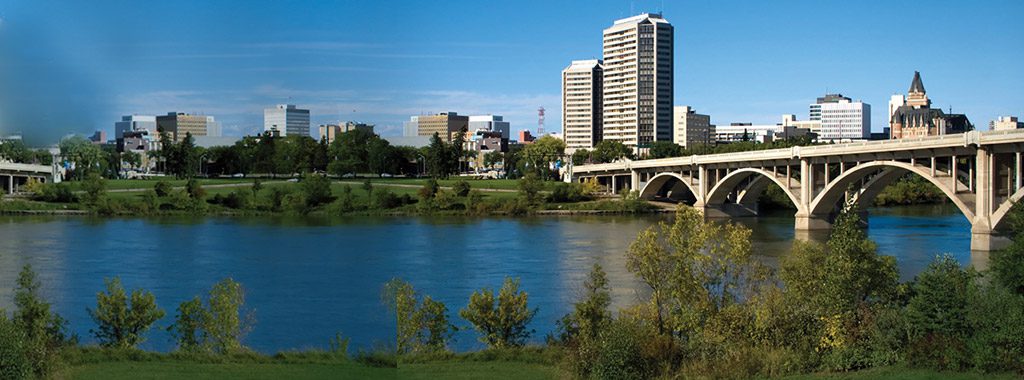About Saskatoon
The city of Saskatoon is often referred to as Bridge City, the Paris of the Prairies as well as ToonTown. Yet the best name to call Saskatoon is Home.
Saskatoon is the largest city in the Canadian province of Saskatchewan. Located along the South Saskatchewan River and the Trans-Canada Yellowhead Highway, Saskatoon has served as the region’s cultural and economic hub since it was founded in 1882 as a Temperence colony. The City of Saskatoon has estimated its population to be 265,300 as of the end of 2016.
Saskatoon is home to the University of Saskatchewan, the Meewasin Valley Authority which protects the South Saskatchewan River and provides the city’s popular riverbank park spaces, and Wanuskewin Heritage Park, a National Historic Site of Canada representing 6,000 years of First Nations History. The Rural Municipality of Corman Park No. 344 is the most populas rural municipality in Saskatchewan. It surrounds the city and contains many of the developments associated with it, including Wanuskewin.
Saskatoon is named after the berry of the same name, which is native to the region. and is derived from the Cree misâskwatômina. The city has a significant Indigenous population and several urban Reserves.
Historic neighbourhoods of Saskatoon include Nutana and Riversdale, which were two separate towns before amalgamating with the town of Saskatoon and incorporating as a city in 1906. Nutana, Riversdale, the historic main streets of Broadway Avenue and 20th Street respectively, the downtown core and other central neighbourhoods are seeing significant reinvestment and redevelopment. Sutherland, the rail town the city annexed in 1956 lies beyond the University lands, is now another historic neighbourhood.
Weather: “Saskatoon Shines” may be the city slogan, however it is one of the sunniest cities in Canada. Saskatoon gets an average or 2.381 hours of sunshine each year.
We experience four distinct seasons in Saskatoon. Temperatures in the summer can range higher than 30°C (86°F) on the warmest of summer days. Winter can see temperatures go as low as -30°C (-22°F), or colder.
The average annual snowfall for Saskatoon is 97 centimetres and average rainfall is 265 millimetres. The months in which Saskatoon receives the most snow are November, December and January. May, June and July receive the most rainfall of the year. Compared to other cities in Canada, the rainfall rate in Saskatoon is quite low.
Weather related links:
The Weather Network – Saskatoon Stats
Environment Canada – Canadian Weather
Saskatoon Time Zone: Saskatchewan uses the Central Standard Time Zone year round. The only Province that does not change clocks for daylight savings time.
Source: Wikipedia



